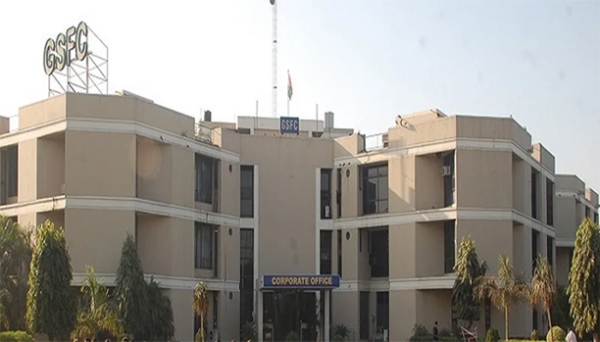स्मॉल-कैप अंडरपरफॉर्मर निवेशक अनिल गोयल का बड़ा दांव है। क्या इसे लंबी अवधि के लिए खरीदा जा सकता है? गणेश बेंज़ोप्लास्ट एक बड़ा अंडरपरफॉर्मर है। पिछले एक साल में, इसने बड़े पैमाने पर बुल मार्केट के बीच केवल 13% रिटर्न दिया है, जिसमें स्मॉल-कैप इंडेक्स लगभग 90% ऊपर चला गया। लेकिन फिर ये वो स्टॉक हैं जिन पर गोयल जैसे वैल्यू इन्वेस्टर बड़ा दांव लगाते हैं और वो भी लंबी अवधि के लिए। क्या भविष्य में स्टॉक बेहतर प्रदर्शन करेगा? चेन्नई के एक साधारण और एकांतप्रिय वैल्यू इन्वेस्टर अनिल कुमार गोयल, गणेश बेंज़ोप्लास्ट पर बड़ा दांव लगा रहे हैं, जो एक स्मॉल-कैप कंपनी है जो लिक्विड स्टोरेज टैंक और केमिकल बनाती है। गोयल, जो पहले चीनी स्टॉक पर अपने बड़े दांव के लिए जाने जाते थे, अब गणेश बेंज़ोप्लास्ट के 3% शेयर रखते हैं, जो स्टॉक मार्केट में एक बड़ा अंडरपरफॉर्मर है। लेकिन फिर, ये वो स्टॉक हैं जिन पर गोयल जैसे वैल्यू इन्वेस्टर बड़ा दांव लगाते हैं और वो भी लंबी अवधि के लिए। 29 जनवरी को बोर्ड मीटिंग में गणेश बेंज़ोप्लास्ट ने गैर-प्रवर्तक निवेशक गोयल को तरजीही शेयर आवंटन के माध्यम से 32.4 करोड़ रुपये मंजूर किए। इसने 1 रुपये के अंकित मूल्य और 162 रुपये प्रति शेयर के प्रीमियम पर 2 मिलियन इक्विटी शेयर जारी किए। उस दिन शेयर की कीमत 5.5% बढ़ी, जबकि बेंचमार्क निफ्टी 50 में सिर्फ़ 2% की वृद्धि हुई। गणेश बेंज़ोप्लास्ट का शेयर मूल्य 177 रुपये प्रति शेयर पर कारोबार कर रहा है। कंपनी का बाजार पूंजीकरण 1,300 करोड़ रुपये है और पिछले एक साल में इसने सिर्फ़ 13% रिटर्न दिया है, जो कि उस तेजी से बढ़ते बाजार से कम है, जिसमें स्मॉल-कैप इंडेक्स में लगभग 70% की वृद्धि देखी गई थी। गोयल उन कंपनियों पर बड़ा दांव लगाना पसंद करते हैं, जिनमें विकास की संभावना है और जो कम मूल्यांकन पर उपलब्ध हैं। लेकिन जब गोयल बड़ा दांव लगा रहे हैं, तो शेयर में शायद ही कोई संस्थागत निवेशक हो। शेयर में लिक्विडिटी कम है, लेकिन दिलचस्प बात यह है कि खुदरा निवेशकों के पास कुल होल्डिंग का 26% हिस्सा है। दरअसल, पिछले एक साल में रिटेल होल्डिंग में कोई बदलाव नहीं हुआ है और शेयर की कीमत में कुछ बदलाव तभी दिखना शुरू हुआ है जब गोयल को पसंदीदा शेयर आवंटित किए गए थे। वॉरेन बफेट की तरह गोयल भी अनावश्यक विविधीकरण में विश्वास नहीं करते। अगर उन्हें यकीन हो कि भविष्य में सेक्टर अच्छा प्रदर्शन करेगा तो वे एक ही इंडस्ट्री से अलग-अलग कंपनियों को खरीदने में सहज महसूस करते हैं। उदाहरण के लिए, उनके पोर्टफोलियो में धामपुर शुगर मिल्स, द्वारिकेश शुगर इंडस्ट्रीज, उत्तम शुगर मिल्स और कई अन्य जैसे कई चीनी स्टॉक हैं। उनका दृढ़ विश्वास है कि सरकार के इथेनॉल-मिश्रण अभियान से चीनी कंपनियों को लाभ होगा। फिर भी, सीएफए सोसाइटी के एक हालिया कार्यक्रम में गोयल ने श्याम शेखर के साथ चर्चा में युवा दर्शकों से कहा कि किसी को अपने गुरुओं के निवेश विचारों की नकल नहीं करनी चाहिए। उन्हें स्टॉक खरीदने या बेचने से पहले दृढ़ विश्वास रखना चाहिए। source: et
स्टॉक रडार:जीएसएफसी में 30% की गिरावट के साथ ट्रेंड रिवर्सल के संकेत दिख रहे हैं: उर्वरक स्टॉक 23 जनवरी को 322 रुपये के रिकॉर्ड उच्च स्तर पर पहुंच गया, लेकिन गति को बनाए रखने में विफल रहा। यह 1 अप्रैल को 213 रुपये पर बंद हुआ, जो लगभग 30% की गिरावट को दर्शाता है। कुछ ही महीनों में भारी गिरावट के बाद, स्टॉक ने पिछले 5 कारोबारी सत्रों में गति पकड़ी गुजरात स्टेट फर्टिलाइजर्स एंड केमिकल्स लिमिटेड (जीएसएफसी) जनवरी 2024 के उच्च स्तर से लगभग 30% गिर गया है, लेकिन अब यह नीचे की ओर गिरने और संभावित ट्रेंड रिवर्सल के संकेत दिखा रहा है। विशेषज्ञों ने सुझाव दिया कि उच्च जोखिम लेने वाले अल्पकालिक व्यापारी 1-2 महीनों में 250-280 के स्तर के संभावित लक्ष्य के लिए गिरावट पर स्टॉक खरीदने पर विचार कर सकते हैं। उर्वरक स्टॉक 23 जनवरी को 322 रुपये के रिकॉर्ड उच्च स्तर पर पहुंच गया, लेकिन गति को बनाए रखने में विफल रहा। 1 अप्रैल को यह 213 रुपये पर बंद हुआ, जो करीब 30% की गिरावट दर्शाता है। कुछ महीनों में इसमें भारी गिरावट आई, लेकिन पिछले 5 कारोबारी सत्रों में इसमें तेजी आई। GSFC में एक सप्ताह में 9% से अधिक की तेजी आई, जिससे पिछले सप्ताह दैनिक चार्ट पर शेयर 200-DMA से ऊपर निकल गया। दैनिक चार्ट पर शेयर को 180 के स्तर से ऊपर समर्थन मिला। इस उछाल ने शेयर को 1 अप्रैल को मजबूत बुल कैंडल के साथ 20-DMA से ऊपर निकलने में भी मदद की। मंगलवार के कारोबारी सत्र में भी तेजी जारी रही। "300 से अधिक के उच्च स्तर से अच्छे सुधार के बाद, GSFC का शेयर 180-200 क्षेत्र के पास समेकित हो गया है, जो वर्तमान में सकारात्मक कैंडल गठन का संकेत देता है, जो पूर्वाग्रह को सुधारने के लिए 202 के महत्वपूर्ण 200-अवधि के MA से आगे निकल गया है और आगे भी तेजी की उम्मीद है," प्रभुदास लीलाधर की उपाध्यक्ष - तकनीकी अनुसंधान, वैशाली पारेख ने कहा। उन्होंने कहा, "आरएसआई ओवरसोल्ड क्षेत्र से उबर चुका है और रुझान में बदलाव के साथ ही चार्ट आकर्षक दिखने के कारण इसने खरीदारी का संकेत दिया है।" source:et
6 largecap cement stocks with upside potential of up to 48%: It took 36 years for India's largest cement company to take its capacity to 100 million tons. To build the next 50 million tons capacity it took just 5 years. This probably sums up many things as far as the cement industry is concerned and to some extent the Indian economy. Whether it was a change in the demand matrix, which made this company push its capacity so high in a short span of time. Also it is an indication of a trend of lower cost of capital which is the biggest enabler for economic growth. On the other side the sector keeps getting hit with seasonal headwinds, like rise in oil price or floods which led to lower demand in some regions some times. But this time, for a change, even the headwinds are turning to be short lived. The biggest change being the fact that the industry has seen an uptick in prices even when new capacities have come up. A few days back, there were reports that cement prices have come down. This led to sharp correction in the cement stocks. But just yesterday, again the reports came about price witnessing an uptick. Cement prices moving up and down might seem to be happening every day, what makes it different is that the reported rise has come in a very short span of time but also at time when additional capacities are getting commissioned, which meant that price would normally see a dip. For the purpose of this report, the stock must have an overall rating of either a "Strong Buy", or a "Buy" or a "Hold". The list has then been sorted with the highest potential stock coming on the top of the list. Cement stocks - Upside potential Apr 3, 2024 Company Name Latest Avg Score Reco Analyst Count * Upside Potential % Inst Stake % 1Y Returns % Market Cap Rs Cr Dalmia Bharat 10 Buy 28 48.4 14.6 2.8 38,024 Ambuja Cements 9 Hold 34 44.2 17.9 69.3 139,432 ACC 9 Buy 33 35.9 25.8 55.0 49,735 Shree Cement 10 Hold 35 25.9 19.0 1.0 95,685 J K Cement 9 Buy 22 19.6 35.3 48.7 33,440 UltraTech Cement 9 Buy 37 19.5 19.8 31.4 289,842 Calculated from highest price target given by analysts source: et
Stark divergence in projected returns of private and PSU banks in next one year: One sector where the street has been giving differential treatment for many years has been the banking space. Private banks were preferred over their PSU counterparts. But three years back, things started to change. Much loved private sector banks started to stagnate, both in terms of absolute price moverment and also in valuations. It was not that immediately the PSU banks came into limelight, there was a phase of more than a year when both private and public sector banks were ignored. But then a year back it was PSU banks which got into limelight and since then have been doing well. But as they say, any kind of bias dont go away easily. Analysts estimates for next year's upside potential are far higher for private sector banks as compared to PSU banks. Possibly they are taking into account the fact that when the capex cycle takes upturn, which it has. PSU banks are much more likely to benefit as they have balance size and more importantly the mind set for that kind of lending. The reason why this question is important at this point of time. Because, banking has been a sector where the street has been giving differential treatment to one set of stocks for many years. Private banks were preferred over their PSU counterparts. This has led to stark differences in return from the same sector. Banking Stocks - Upside Potential Apr 3, 2024 Search in table Company Name Latest Avg Score Reco Analyst Count Upside Potential% Inst Stake % 1Y Returns % Market Cap Rs Cr HDFC Bank 7 Buy 42 29.7% 52.7 -8.1 1,124,305 Axis Bank 10 Buy 41 21.3% 64.8 21.1 323,349 Indusind Bank 8 Buy 41 19.3% 35.1 44.6 121,375 Kotak Mahindra Bank 8 Buy 38 17.8% 48.4 0.7 349,208 AU Small Finance Bank 6 Buy 23 16.8% 48.5 5.1 43,911 Federal Bank 9 Buy 31 14.9% 65.0 15.7 37,480 ICICI Bank 10 Strong Buy 43 13.8% 53.4 22.3 759,325 IDFC First Bank 10 Buy 17 13.6% 20.0 42.5 55,902 Union Bank of India 10 Buy 10 4.0% 11.5 131.4 119,809 Bank of India 8 Buy 4 0.9% 14.1 85.3 64,124 Bank of Baroda 10 Buy 27 0.6% 23.2 60.3 140,351 State Bank of India 10 Buy 40 0.1% 27.6 45.5 684,830 Indian Bank 10 Buy 10 -6.3% 16.6 83.9 71,861 Canara Bank 10 Buy 15 -13.1% 20.6 107.1 107,923 source:et
Nvidia's 3-barrel shotgun keeping competitors at bay while keeping customers: Why are competitors finding it so hard to eat Nvidia's lunch? We outline three key reasons that give this chip company an unassailable advantage for the near future. Dominance in the technology industry can be notoriously short. Companies like DEC, IBM, Cisco, Fairchild, Nokia, BlackBerry have all had their moment in the sun only to see it set faster than expected. There are exceptions of course, Intel, Microsoft, and now Apple, that have maintained their competitive edge for long duration. The latest to join the "seemingly unassailable" is Nvidia. This company made its first millions through the graphical processor unit (GPU) route. As personal computers became more visual in their interface and started offering games as a part of the software ecosystem, the microprocessor companies such as Intel or AMD realised that such visual computing needed specialised components. Take for example, TVs or mobile screens. When you get into manipulating large images, especially when you get to an HD display that has 2,000,000 pixels on it or now with 4K displays four times that it is tough task. "It takes a tremendous amount of multipliers to be able to scale or rotate images, to be able to apply, say, colour filtering," says Loftus. Another application is gaming. In the gaming environment, you take a reference picture and are manipulating it in ways to allow the character to be able to walk around, and backflip on a screen. "What's happening there is you have this reference image that is stored in the memory and the GPU is able to bring in millions of bits of information that represents that image, and it's able to do these multiplications to be able to shrink, expand, turn an image that is made up of millions of units," says Loftus. Nvidia (and other such GPUs but Nvidia is the biggest) have specialised multiplication units to do this. "GPUs had hundreds, and now have thousands and thousands, of dedicated multipliers with specialised memory management units that are able to bring in a large array of data. In parallel, these units push it through hundreds or thousands of multipliers and write that data back out to these very high bandwidth memories," says Loftus. source:et
The small-cap underperformer is investor Anil Goel's big bet.value buy for the long term? Ganesh Benzoplast is a big underperformer. In the last one year, it has given only 13% return amid a massive bull market that saw the small-cap index going up almost 90%. But then these are the stocks that value investors like Goel bet big on and that too for the long term. Will the stock outperform in the future? Anil Kumar Goel, a simple and reclusive value investor from Chennai, is betting big on Ganesh Benzoplast, a small-cap company that manufactures liquid storage tanks and chemicals. Goel, earlier known for his big bets on sugar stocks, now holds 3% of Ganesh Benzoplast, which is a big underperformer in the stock market. But then, these are the stocks that value investors like Goel bet big on and that too for the long term. On January 29, at a board meeting, Ganesh Benzoplast approved INR32.4 crore by way of preferential share allotment to non-promoter investor Goel. It issued 2 million equity shares at a face value of INR1 and a premium of INR162 per share. The stock price moved up 5.5% that day while the benchmark Nifty 50 inched up just 2%. The stock price of Ganesh Benzoplast trades at INR177 per share. The company has a market capitalisation of INR1,300 стоге and over the last one year, it has returned only 13%, underperforming a roaring bull market that saw the small-cap index going up almost 70%. Goel likes to bet big on companies that have growth potential and are available at low valuations. But while Goel is betting big, there are hardly any institutional investors in the stock. The stock has low liquidity, but interestingly retail investors account for 26% of the overall holding. In fact, the retail holding has not changed the last one year and the stock price has started to show some movement only after Goel was allotted prefere shares. Like Warren Buffet, Goel does not believe in unnecessary diversification. He is comfortable buying different companies from the same industry if he is convinced that the sector will play out well in the future. For instance, he has many sugar stocks in his portfolio such as Dhampur Sugar Mills, Dwarikesh Sugar Industries, Uttam Sugar Mills and many others. He strongly believes that sugar companies will benefit from the government's ethanol- mixing drive. Nevertheless, at a recent event by the CFA Society, Goel in a discussion with Shyam Shekar told a young audience that one must not simply copy investment ideas of their mentors. They must hold a strong conviction before they buy or sell a stock. source: et
Stock Radar:GSFC shows signs of trend reversal falling 30% from highs: The fertiliser stocks hit a record high of Rs 322 on January 23 but failed to hold the momentum. It closed at Rs 213 on April 1, which translates into a downside of about 30%. After undergoing a steep correction in a matter of months, the stock picked up. momentum in the last 5 trading sessions Gujarat State Fertilizers & Chemicals Ltd (GSFC) has plunged by about 30% from January 2024 highs but is now showing signs of bottoming out and a possible trend reversal. Short-term traders with a high-risk appetite can look to buy the stock on dips for a possible target of 250-280 levels in 1-2 months, suggested experts. The fertiliser stock hit a record high of Rs 322 on January 23 but failed to hold the momentum. It closed at Rs 213 on April 1, which translates into a downside of about 30%. It underwent a steep correction in a matter of months but picked up momentum in the last 5 trading sessions. GSFC rose over 9% in a week, which helped the stock break above 200-DMA on daily charts last week. The stock found support above 180 levels on daily charts. The bounce back also helped the stock break above the 20-DMA on April 1 with a strong bull candle. The momentum continued in Tuesday's trading session as well. "After the decent correction from the high of over 300, GSFC stock has consolidated near the 180-200 zone, currently indicating a positive candle formation, which has moved past the important 200-period MA of 202 levels to improve the bias and further rise is anticipated," said Vaishali Parekh, vice-president - technical research, Prabhudas Lilladher. "The RSI has recovered from the oversold zone and with a trend reversal it has signalled a buy with the chart looking attractive," she said. source: et
आईटी भर्ती में सुधार के संकेत; कंपनियाँ सतर्क: आईटी क्षेत्र के सलाहकारों ने कहा कि एफवी25 के लिए बातचीत अभी भी बेंच को और अधिक कमजोर करने, स्वचालन को बढ़ाने, दक्षता में सुधार करने और एआई तथा जनरल एआई जैसे विशिष्ट क्षेत्रों में लक्षित भर्ती पर केंद्रित है, जबकि व्यापक आर्थिक अनिश्चितता जारी है और मांग में सुधार के अभी तक कोई संकेत नहीं मिले हैं। लिंक्डइन और अन्य शीर्ष जॉब बोर्ड के आंकड़ों से पता चलता है कि शीर्ष आईटी सेवा कंपनियों की ओर से सक्रिय भर्ती में पिछले 20 महीनों में पहली बार वृद्धि दर्ज की गई, जिसमें आवेदन स्वीकार करने वाले कुल पदों की संख्या इस साल जनवरी में 50,000 के निचले स्तर से बढ़कर मार्च में 82,000 हो गई। लेकिन घटती हुई छंटनी के कारण, शीर्ष आईटी सेवा कंपनियों द्वारा सामूहिक सकल भर्ती में मार्च में समाप्त तिमाही में 4-6% तिमाही-दर-तिमाही गिरावट आई, जैसा कि स्टाफिंग फर्म एक्सफेनो द्वारा जनवरी-मार्च अवधि में प्रतिभा आंदोलन पैटर्न के आधार पर ईटी के लिए किए गए विश्लेषण से पता चलता है। विश्लेषण में विप्रो, इंफोसिस, टीसीएस, एचसीएल, एलटीआई माइंडट्री, एलएंडटी टेक्नोलॉजी सर्विसेज, टेक महिंद्रा और कॉग्निजेंट को शामिल किया गया। क्षमताआईटी क्षेत्रएआईअधिग्रहणआईआईएफएल सिक्योरिटीज "जबकि सकल भर्ती (एट्रिशन रिफिल और नई भर्ती) आठ तिमाहियों से कम और घट रही है, सक्रिय मांग में मौजूदा वृद्धि आईटीएस समूह में क्षमता के लिए भर्ती की वापसी को दर्शाती है," एक्सफेनो के सह-संस्थापक अनिल एथनूर ने कहा। "4-6% की गिरावट के साथ, मार्च 2024 को समाप्त तिमाही के लिए सकल भर्ती मात्रा दो से अधिक वित्तीय वर्षों में सबसे कम हो सकती है। लेकिन सकल भर्ती में गिरावट के बावजूद, कम निकासी के संयुक्त प्रभाव के परिणामस्वरूप कर्मचारियों की संख्या में गिरावट आएगी जो पिछली तिमाही की तुलना में कम होगी," उन्होंने कहा। सतर्क दृष्टिकोण आईआईएफएल सिक्योरिटीज के वरिष्ठ उपाध्यक्ष ऋषि झुनझुनवाला ने कहा: "कुल मिलाकर मांग में कोई खास वृद्धि नहीं हुई है और राजस्व वृद्धि के मामले में वित्त वर्ष 25 स्ट्रीट द्वारा अनुमानित से अधिक धीमा हो सकता है। लेकिन कंपनियों द्वारा जनशक्ति अनुकूलन पर ध्यान केंद्रित करने और पिछले पूरे वर्ष में भर्ती पर रोक लगाने के बाद भर्ती में थोड़ी वृद्धि हो सकती है। कुछ पद खाली होंगे क्योंकि कंपनियां उपयोग बढ़ाने और कर्मचारियों की संख्या कम करने में कामयाब रही हैं।" डेटा से पता चलता है कि सबसे बड़ी आईटी सेवा कंपनियों ने पिछली तीन तिमाहियों में 75,000 शुद्ध कर्मचारियों की संख्या में कमी की है। source:et
2024 लिस्टिंग लाभ के लिए सबसे अच्छे वर्षों में से एक हो सकता है; निवेशकों को सावधान रहना चाहिए: 2024 में अब तक IPO के लिए औसत लिस्टिंग लाभ लगभग 26% है, जबकि कैलेंडर वर्ष 2023 और 2022 में यह क्रमशः 28% और 10% है। यदि मौजूदा रुझान जारी रहे, तो 2024 महामारी के बाद से IPO के लिए सबसे बड़ा वर्ष बन सकता है जब इक्विटी में तेजी आती है और मूल्यांकन महंगे क्षेत्र में प्रवेश करता है, तो प्राथमिक बाजार में आमतौर पर उथल-पुथल शुरू हो जाती है। पिछले दो वर्षों में, कई बड़ी और छोटी कंपनियों ने अपने आरंभिक सार्वजनिक निर्गम (IPO) लॉन्च किए हैं, जबकि कुछ ने निवेशकों के लिए पर्याप्त संपत्ति बनाई है। लेकिन जैसे-जैसे मूल्यांकन बढ़ता है और खुदरा निवेशक लिस्टिंग लाभ के लिए लालची होते जाते हैं, कई छोटी कंपनियाँ उत्साह का अधिकतम लाभ उठाने के लिए पूंजी बाजार का सहारा लेती हैं। उदाहरण के लिए, 2024 में शीर्ष 10 IPO में से आठ का बाजार पूंजीकरण 5,000 करोड़ रुपये से कम है। निवेशकों को बेहद सतर्क रहने की जरूरत है क्योंकि इनमें से कई कंपनियां शुरुआती लिस्टिंग लाभ दे सकती हैं, लेकिन दीर्घकालिक निवेश विचार नहीं हो सकते हैं। टाटा टेक्नोलॉजीज का आईपीओ पिछले साल सबसे अच्छे निवेश अवसरों में से एक था। शेयर ने 163% की बढ़त के साथ शुरुआत की और आज यह अपने इश्यू प्राइस से 105% अधिक पर कारोबार कर रहा है। जबकि टाटा टेक्नोलॉजीज ने 2023 में सबसे अच्छा लिस्टिंग लाभ दिया, साल का सबसे बड़ा आईपीओ मैनकाइंड फार्मा था, और कंपनी का शेयर अपनी शुरुआत के बाद से 65% से अधिक ऊपर है। स्रोत: et











Apr 04 2024, 09:42
- Whatsapp
- Facebook
- Linkedin
- Google Plus
0